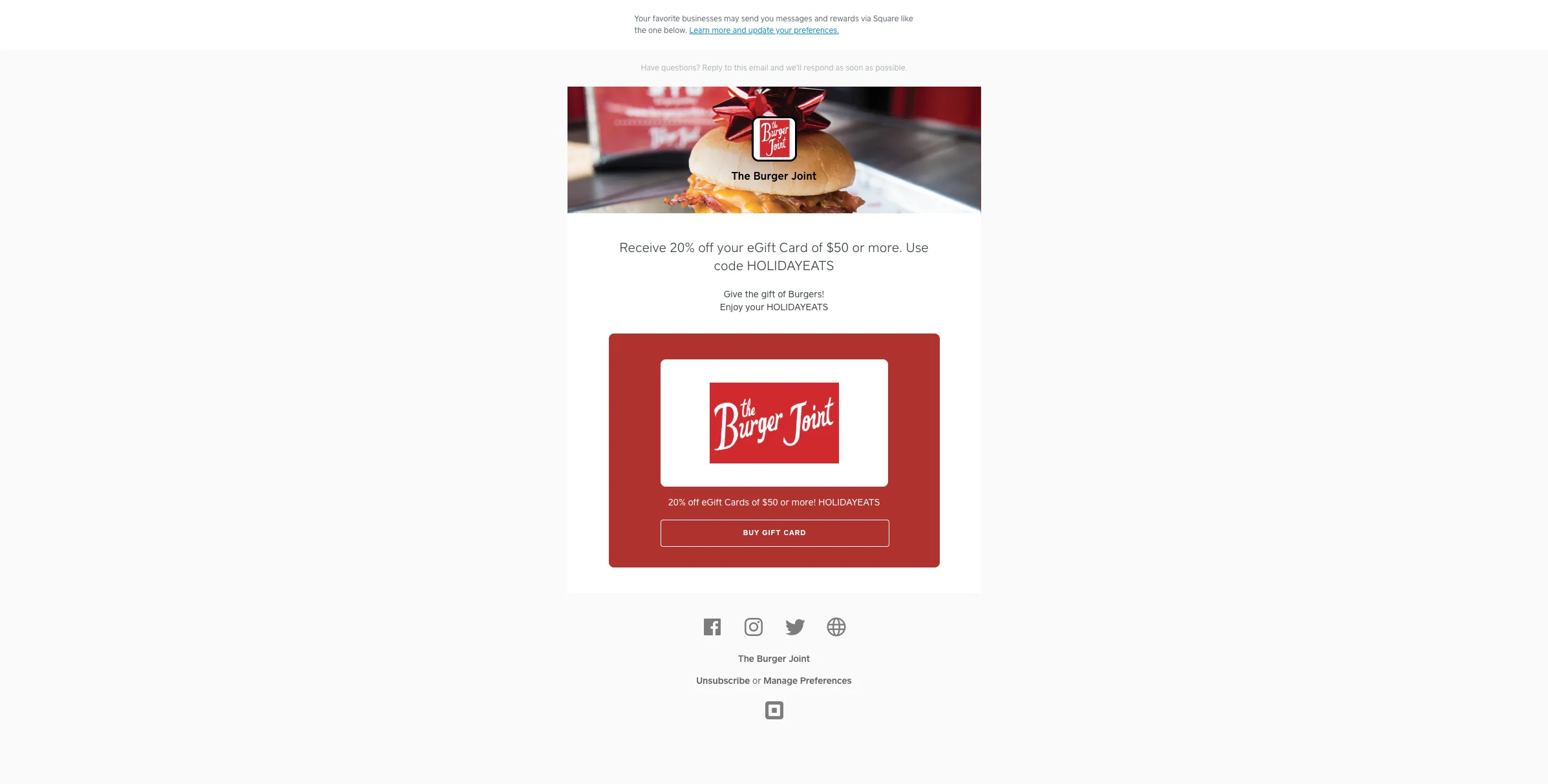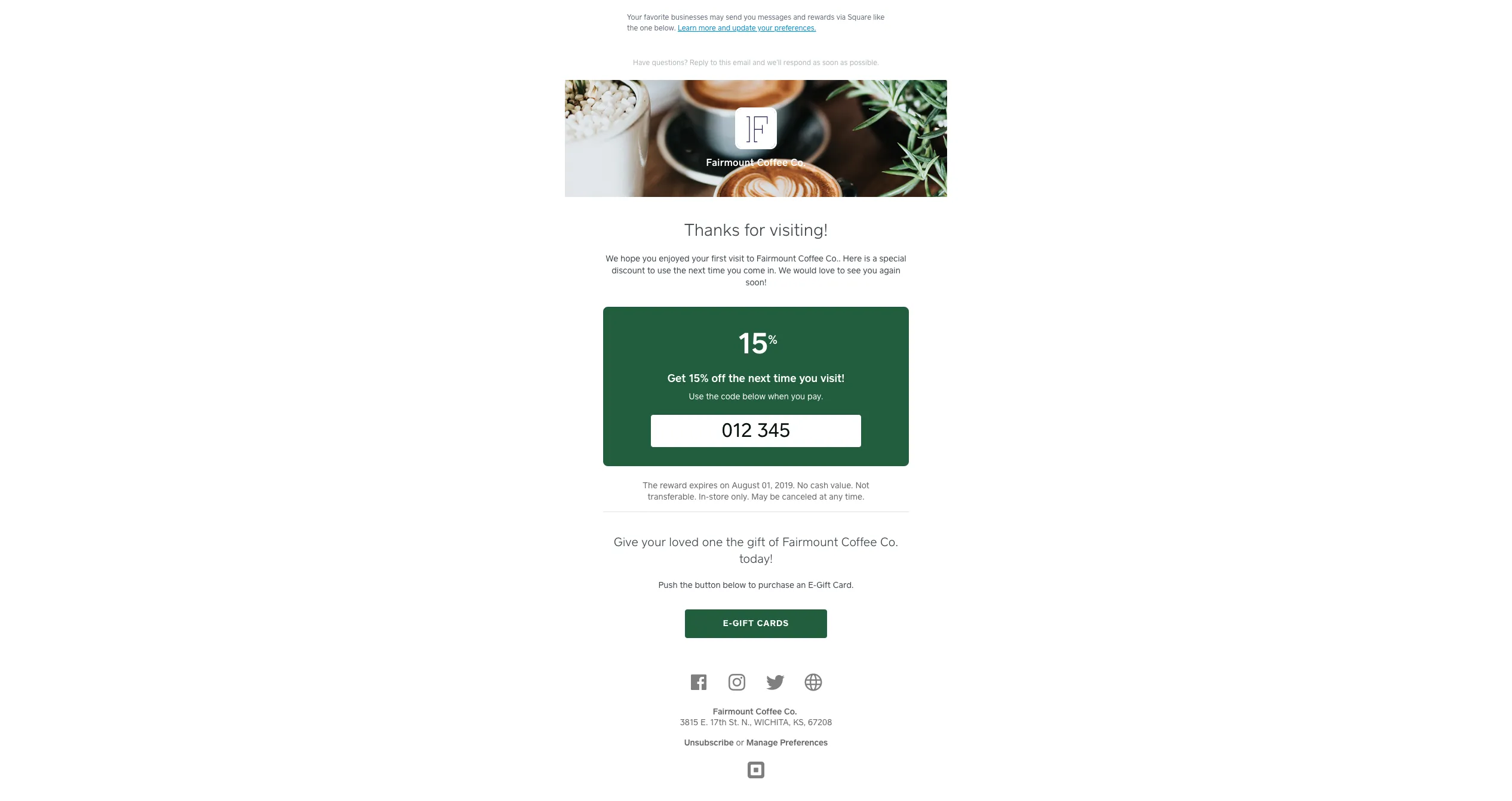Table of contents
It’s easy to find yourself at a loss for words when emailing your customers. What can you say to your customers that will reach them in a meaningful and authentic way? There’s no one right answer, but there are some helpful guidelines to help you find your way.
How do you determine the purpose of your email?
Start with your end goal in mind. What do you want your customers to do after they open your email? Do you want them to come into your store for an event? Do you want them to use a discount or promotion? Or do you want them to share your newsletter with their family and friends?
For instance, if you want your customers to come in for an event, then that purpose should drive your email content. Make sure that the date, time, and place of the event is clear and located at the top of your email.
Once you know the purpose of your email, you can start to build the content and design of your email by selecting Create a Campaign within your Square Marketing dashboard.
What are the different types of email?
There are two main types of email that you can send your customers: transactional and marketing. Both are important to any email marketing strategy. So important, in fact, that we think they’re worth reviewing.
Transactional email
Transactional email is sent to a customer (or prospective customer) based on some action (or inaction). It aims to complete some type of transaction or process that the customer started with you, or to notify your customer base of updates like system outages or a change of terms.
A confirmation or receipt is a very common transactional email. It’s sent as a courtesy to your customers when they’ve ordered a product, signed up for a newsletter, registered for an event, or purchased a product.
You want to think about where transactional email makes the most sense on your customers’ journey.
Marketing email
Marketing email contains a message or content that pushes a specific commercial purpose, whether it’s an upcoming sale or event or the announcement of a new product line.
Marketing email can be sent manually or be automated. Examples of manual marketing include informational, newsletter, sale or promotion, and event invitation email. Automated marketing examples include welcome, thank-you, reengagement, and birthday or anniversary email. No matter what type you send, the timing of those sends should be strategic and deliberate.
Marketing email in the United States is subject to the CAN-SPAM Act in the U.S. (and other applicable laws). Before you start sending marketing email, make sure you are familiar with all the applicable regulations. We recommend speaking with a legal expert.
How do you create a mix of content for email?
Whether you’re sending transactional or marketing email, it’s a good idea to include a mix of content.
For instance, maybe for November you send out a discount, in December you invite your customers to an in-store event, and in January you give your customers a behind-the-scenes look at your business. Please note that while variety is the spice of life for email content, consistency is king when it comes to sending.
What does a great email look like?
A good email not only has great content but also great design. Below are three examples of marketing email created using Square’s email marketing platform.
Event invitation email
Made in Kansas City Marketplace makes great use of its design and content by putting the date, time, and place at the very beginning of the email.
Promotional email
The Burger Joint grabs its audience’s attention with the subject line “Receive 20% off your eGift card of $50 or more.” A strong subject line is an integral part of any promotional email.
Welcome email
This welcome email from Fairmount Coffee Co. was triggered when one of its customers signed up for its email list. Remember, it’s worth setting up welcome email as it has an average open rate of 38 percent.
![]()














